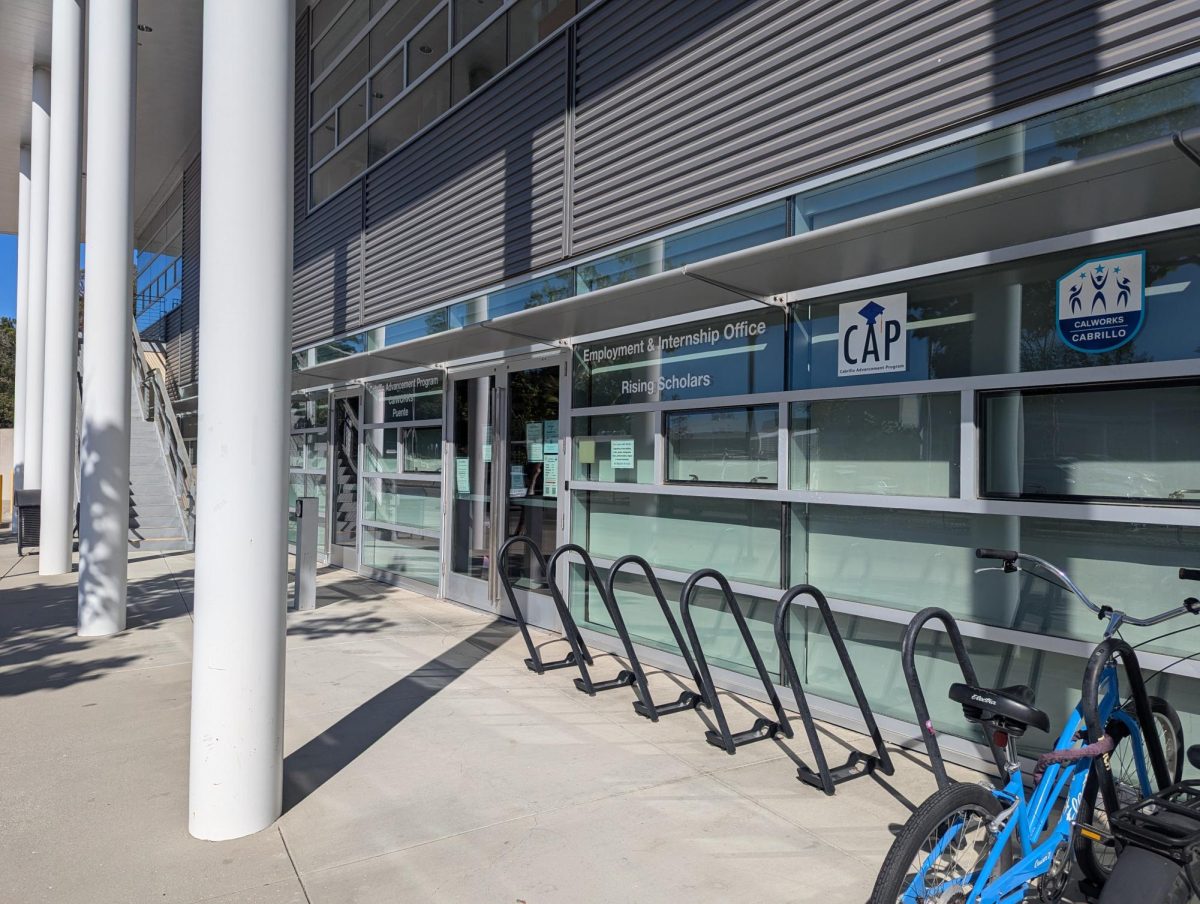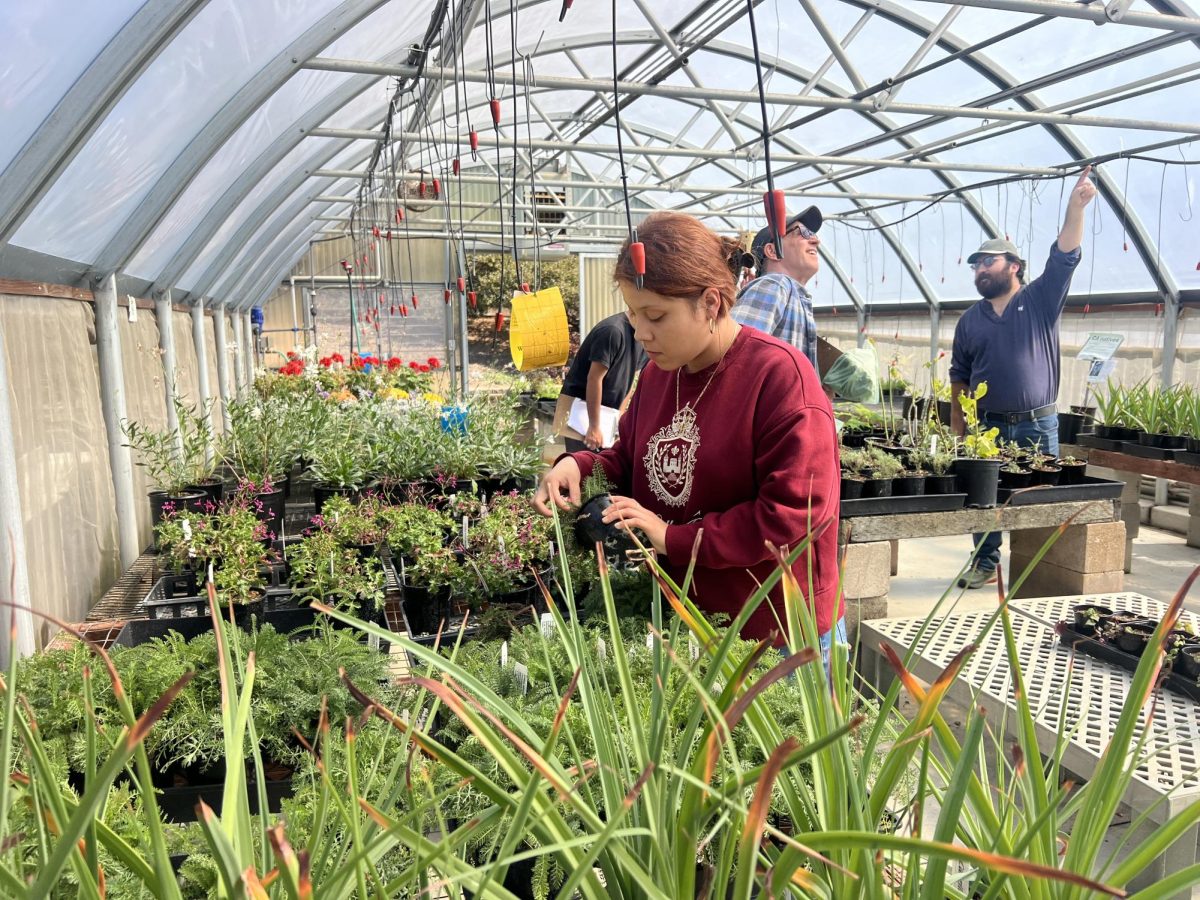You can learn to write online, but you can’t throw a pot. Navigating the realities of teaching and learning online during the pandemic has required creative solutions from everyone, especially in the Cabrillo arts department.
Classes that don’t translate well to online learning are designated as “difficult to convert,” said Claire Thorson, Art Studio Department chair. “Those tend to be courses that have really specific tools and equipment, like jewelry courses and ceramic courses. Students don’t have as much access as they would have had.” Printmaking, jewelry and wheel-thrown pottery are operating on campus in a diminished capacity with safety protocols and a limited number of students.
In fall semester 2020 Cynthia Siegel, a Cabrillo ceramics instructor since 2008, had to shift her beginning/intermediate hand-building ceramics course to online. “Creating the modules to the point where I felt like I was giving quality education took a lot of time,” said Siegel. This extra time spent reconfiguring courses, plus added expenses like upgrading her home internet connection and buying new equipment for creating online content, have gone uncompensated by the college. “There were some weeks where I was putting 50 hours a week into creating the modules.”
“Getting them comfortable creating a workspace with whatever resources they had,” was a priority, said Siegel. Some students made space on dining tables, covering a piece of plywood with canvas, so that their workstation could be mobile. “Some students are working on a table they share with other people so having a work board they can pick it up and go away,” said Siegel.
Others, like Elizabeth Aaronson, 66, of Menlo Park, already had a dedicated space for her ceramics work. “I am pretty well set up. Much more so than an awful lot of the students. A lot of the students had to work outside and didn’t really have the space.”
Already dealing with the challenges of working at home and navigating the new realities of lockdown, students were faced with even more turmoil when the CZU fire hit in August 2020, forcing some to evacuate. “They were still making it work, they were still going through the modules and getting started the best they could,” said Siegel, “I tried to temper my expectations with the fact that everybody is discombobulated.”
On Zoom, “everyone has a front-row seat.”
Cynthia Siegel
In spite of all the difficulties, Siegel believes some of her students managed to create work at home that was equal to what they could have achieved in class. “There are definitely silver linings.” On Zoom, “everyone has a front-row seat.” The online format also allows students to dive deeper into a wider range of resources that teachers can share on Canvas. “I see some potential application for Canvas, even with the face-to-face classes,” said Siegel.
Fewer available courses and reduced enrollment has especially affected part-time teachers. Only nine out of 15 adjuncts in the art department were able to teach in spring semester. “There are fewer people teaching, fewer adjuncts teaching just because we’re offering fewer classes. Full-time faculty’s contracts are met, and what’s left goes to adjuncts with seniority. It’s a really slender time for adjunct employment. And the arts were hit much harder by Covid-19 and the conditions of the pandemic than other programs,” said Thorson. “We’re only offering one section of wheel-throwing when typically we offer two. Across the program, I’d say we’re offering 5 less sections than we typically do.”
Cabrillo doesn’t plan to return to in-person classes until Spring 2022. In the meantime, art teachers and students are finding the bright side. Even online art studies can be “a lifeline, a structure for students,” said Thorson. For Siegel, “the work was rewarded by the students. The students really stepped up and did some beautiful things.”
Siegel never met any of her students in person, although they got to know each other online. “I think a lot of students do miss the social situation of being in the classroom,” says Thorson. “I miss being able to stand next to a student who’s drawing, and talk about the drawing. You’re looking at work that they photograph and post online.”
“One thing we’re finding out from this crazy time that we’re in is that we do have a strong desire and a strong commitment to going forward and it’s pretty great to be around that,” said Thorson. “That sense that we did it, we did it together, we made it through something. And it wasn’t something we chose, something we signed up for, but we did it, somehow. We figured it out.”









